Cortinarius bolaris (Pers.) Fr. - Dappled Webcap
Phylum: Basidiomycota - Class: Agaricomycetes - Order: Agaricales - Family: Cortinariaceae
Distribution - Taxonomic History - Etymology - Toxicity - Identification - Reference Sources
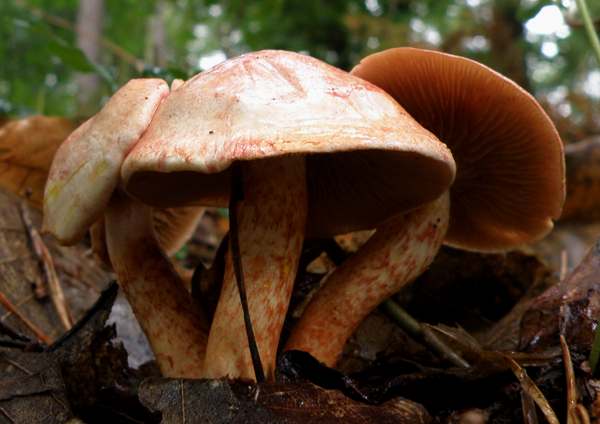
Cortinarius bolaris fruits from late summer to early winter mainly in beech woods. Its red-dappled cap is quite distinctive, especially in older specimens where the cap surface breaks up into annular rings of reddish scales on a buff background.
Mycorrhizal with hardwood trees, this easily-recognised webcap is found almost exclusively under Beech trees and very occasionally under oaks; it often forms small, photogenic groups with stems curving together and meeting at soil level.
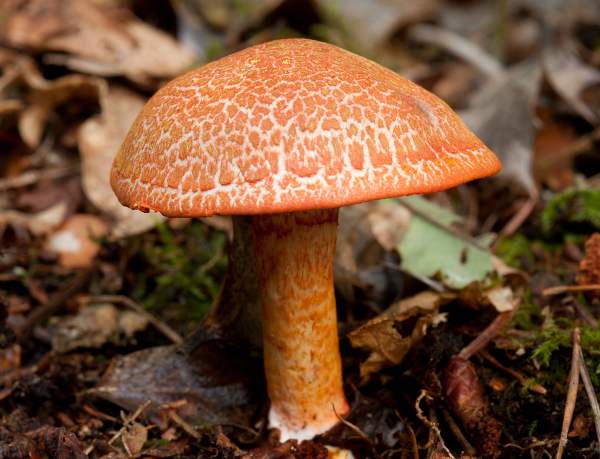
Distribution
In Britain and Ireland the Dappled Webcap is fairly common but rather localised. This mushroom of late summer and autumn is found in mixed woodland, particularly under Beech and oaks, with which it is mycorrhizal.
Cortinarius bolaris is also found throughout most of mainland Europe and in parts of North America.
Taxonomic history
When the Dappled Webcap was described by Christiaan Hendrik Persoon in 1801 it was given the name Agaricus bolaris. (Most gilled fungi were initially placed in a giant Agaricus genus, now redistributed to many other genera.)As with many of the webcaps, it was the great Swedish mycologist Elias Magnus Fries who transferred this species to the genus Cortinarius in 1838, renaming it Cortinarius bolaris.
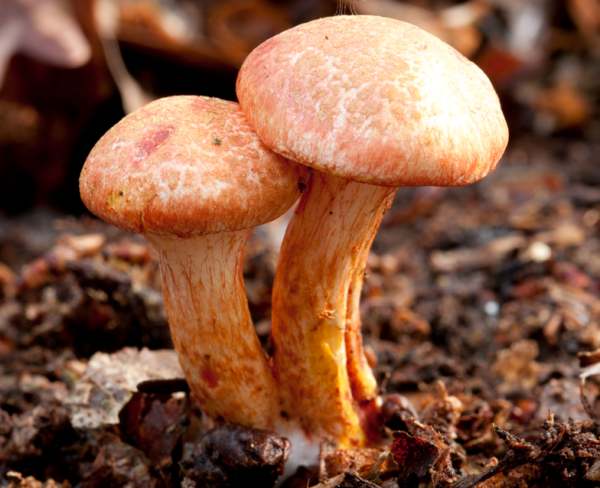
Etymology
The generic name Cortinarius is a reference to the partial veil or cortina (meaning a curtain) that covers the gills when caps are immature. In the genus Cortinarius most species produce partial veils in the form of a fine web of radial fibres connecting the stem to the rim of the cap; remnants of the veil often adhere to the stem and become apparent when ripe spores fall onto them.
In David Gledhill's 'The Names of Plants', the entry for the specific epithet bolaris is 'dark red, brick-coloured, modern Latin, bolaris; netted, (the surface is tessellated with reddish scales)'.
Toxicity
This mushroom is reputed to be poisonous (and it could easily be confused with some of the other reddish webcaps that contain orellanine and are known to be deadly poisonous.) It should not be gathered for eating.
Identification guide
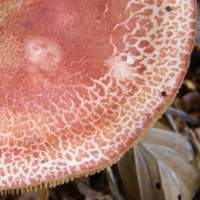 |
CapAt first domed and then shallowly convex or flat with a broad umbo, the scales on the dry buff-coloured caps vary in colour from orange to deep red. Cap diameter varies from 3 to 10cm at maturity. |
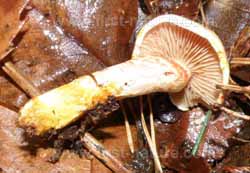 |
GillsThe gills of the Dappled Webcap, which are covered by a cortina in young specimens, are pale yellow and become rusty brown as the spores mature. StemThe stipe, which is often bowed rather than straight, is pale mottled with red, and it is fibrous with a slightly clavate (club-shaped) base, is typically 5 to 15mm in diameter and 4 to 8 cm tall. The remains of the white cortina that adhere to the stem are soon marked by a brown stain from falling spores. When cut, the flesh of this mushroom gradually turns yellow, most noticeably near the base of the stem. |
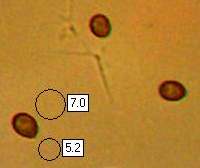 |
SporesSubglobose to ovoid, 6-8 x 4.5- 6µm; with a moderately rough or verucose surface; inamyloid. Spore printRusty brown. |
Odour/taste |
No significant taste or odour. |
Habitat & Ecological role |
Under Beeches and less frequently other hardwood trees; most common in areas where the soil is acidic. |
Season |
July to November in Britain and Ireland. |
Similar species |
Several other webcaps resemble Cortinarius bolaris. Among these are Cortinarius rubellus and Cortinarius orellanus which are deadly poisonous. |
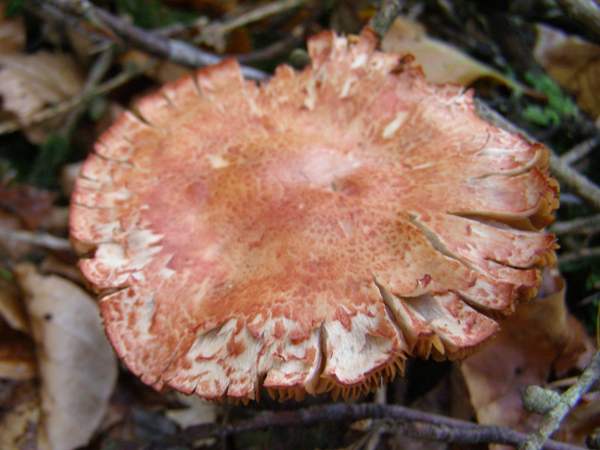
Reference Sources
Fascinated by Fungi, 2nd Edition, Pat O'Reilly 2016, reprinted by Coch-y-bonddu Books in 2022.
Funga Nordica, Henning Knudsen and Jan Vesterholt, 2008.
Dictionary of the Fungi; Paul M. Kirk, Paul F. Cannon, David W. Minter and J. A. Stalpers; CABI, 2008
Taxonomic history and synonym information on these pages is drawn from many sources but in particular from the British Mycological Society's GB Checklist of Fungi.
The Names of Plants, David Gledhill, Cambridge University Press 2008. ISBN-13 978-0-521-86645-3
Acknowledgements
This page includes pictures kindly contributed by David Kelly.
Fascinated by Fungi. Back by popular demand, Pat O'Reilly's best-selling 450-page hardback book is available now. The latest second edition was republished with a sparkling new cover design in September 2022 by Coch-y-Bonddu Books. Full details and copies are available from the publisher's online bookshop...

